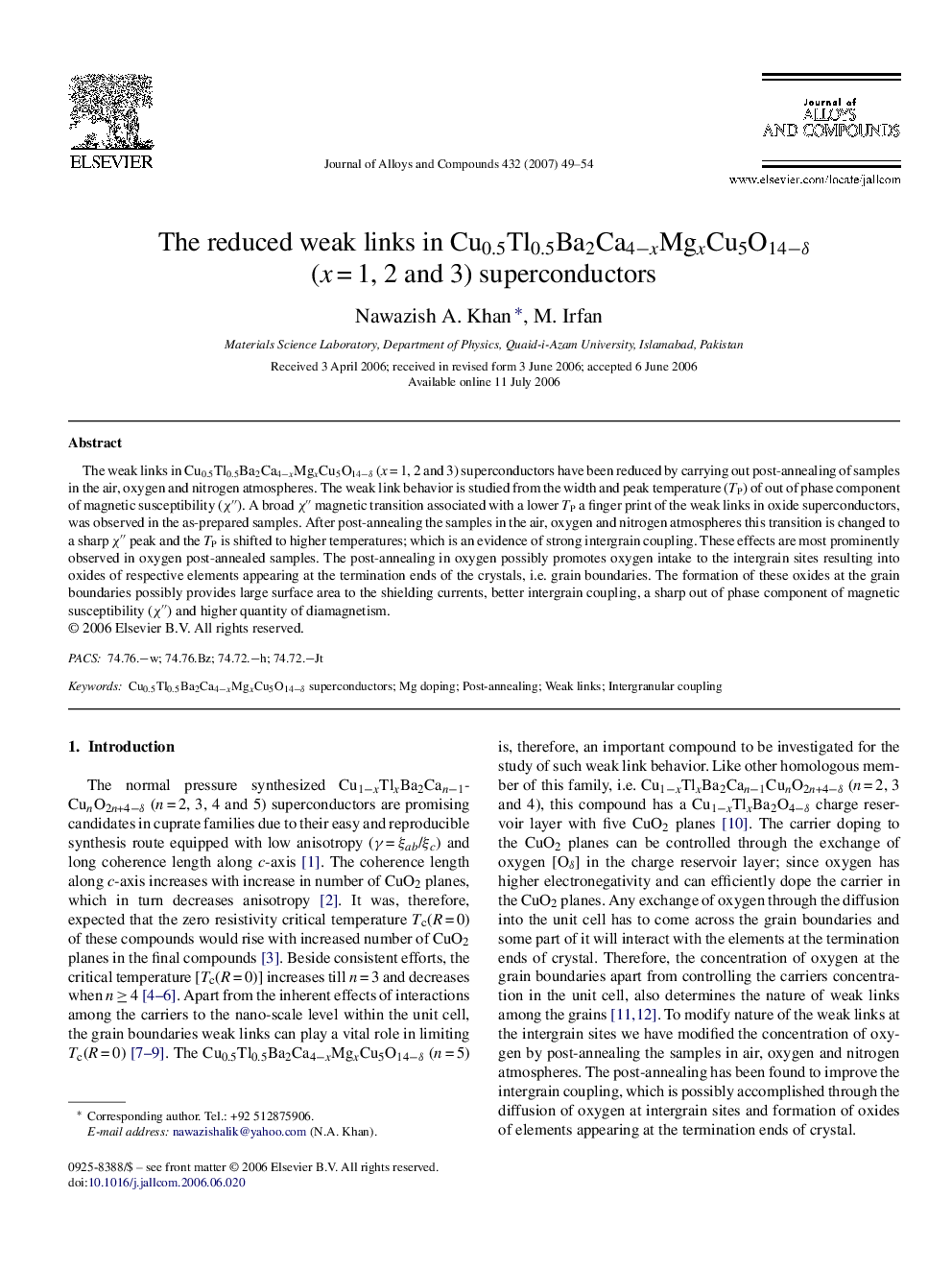| Article ID | Journal | Published Year | Pages | File Type |
|---|---|---|---|---|
| 1626637 | Journal of Alloys and Compounds | 2007 | 6 Pages |
Abstract
The weak links in Cu0.5Tl0.5Ba2Ca4âxMgxCu5O14âδ (x = 1, 2 and 3) superconductors have been reduced by carrying out post-annealing of samples in the air, oxygen and nitrogen atmospheres. The weak link behavior is studied from the width and peak temperature (TP) of out of phase component of magnetic susceptibility (Ïâ³). A broad Ïâ³ magnetic transition associated with a lower TP a finger print of the weak links in oxide superconductors, was observed in the as-prepared samples. After post-annealing the samples in the air, oxygen and nitrogen atmospheres this transition is changed to a sharp Ïâ³ peak and the TP is shifted to higher temperatures; which is an evidence of strong intergrain coupling. These effects are most prominently observed in oxygen post-annealed samples. The post-annealing in oxygen possibly promotes oxygen intake to the intergrain sites resulting into oxides of respective elements appearing at the termination ends of the crystals, i.e. grain boundaries. The formation of these oxides at the grain boundaries possibly provides large surface area to the shielding currents, better intergrain coupling, a sharp out of phase component of magnetic susceptibility (Ïâ³) and higher quantity of diamagnetism.
Related Topics
Physical Sciences and Engineering
Materials Science
Metals and Alloys
Authors
Nawazish A. Khan, M. Irfan,
